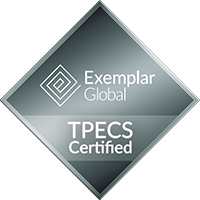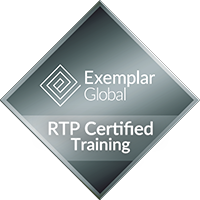| Approx Course Duration *: | Equivalent to Approx. 1hr |
| Access to Course Content: | 18 Months from the date of enrolment |
| Qualification/s: | Introduction to ISO 22000 Clause 10 Improvement |
| CPD Hours: | 1 Continuing Professional Development Hours |
A stackable, certified microcredential for food industry professionals.
Why this clause matters: Clause 10 ensures issues are handled systematically — from immediate correction and controlling nonconformities to root-cause-based corrective action — and embeds continual improvement so your FSMS becomes more capable over time.
This microcredential clarifies how to respond to problems, prevent recurrence and prove improvement in a way that aligns with ISO 22000:2018. You’ll connect data from performance evaluation to targeted actions and track outcomes with clear, auditable evidence.
Who this course is for
Food industry professionals who lead or support improvement, problem-solving and corrective action in an FSMS.
- FSMS coordinators, quality and compliance managers
- Food safety team leaders and internal auditors
- Operations leaders driving corrective action and improvement
- Consultants supporting certification readiness and surveillance
What you’ll learn
- How to control and document nonconformities and apply effective correction
- How to perform root cause analysis and implement corrective actions
- How to verify effectiveness and prevent recurrence
- How to structure continual improvement activities and link them to objectives and results
- How to maintain auditable evidence of improvement
What you’ll be able to do
- Respond to issues quickly and contain impacts with documented correction
- Identify root causes and implement corrective actions that work
- Evaluate effectiveness and close out actions with evidence
- Plan and track continual improvement to strengthen FSMS performance
- Demonstrate systematic improvement during internal and external audits
What’s included
- Focused microcredential on ISO 22000 Clause 10 with practical guidance and examples
- Templates/prompts: nonconformity log, 5-Whys/Fishbone root cause tools, corrective action register, CI tracker
- Knowledge checks and downloadable references for ongoing use
Upgrade your pathway
Stack this credential with additional ISO 22000 microcredentials — or progress into assessed pathways (Specialist, Internal Auditor, Lead Auditor) when you’re ready.
Compare ISO 22000 course options
| Course Type | Includes Assessment? | Suitable Roles | Primary Outcome |
|---|---|---|---|
| Introduction to ISO 22000 | No |
|
Understand ISO 22000 and FSMS essentials; upgradeable to Specialist |
| ISO 22000 Specialist | Yes |
|
Plan, implement and maintain a Food Safety Management System with evidence and templates |
| ISO 22000 Internal Auditor | Yes |
|
Plan, conduct and report FSMS audits that drive corrective action and improvement |
| ISO 22000 Lead Auditor | Yes |
|
Lead audit teams and manage audit programs for certification readiness |
| Stackable Microcredentials | Varies |
|
A stackable, certified microcredential for food industry professionals.
Why this clause matters: Clause 10 closes the loop, respond to nonconformities, remove root causes, and continually improve your FSMS with evidence.
This microcredential contains the following lessons, each finished with a knowledge check and a short-format exam.
| Lesson Topic | Focus Area | Key Takeaways |
|---|---|---|
| Clause 10.1 | Nonconformity & Corrective Action | React, contain, analyse root causes, implement and review corrective actions; retain evidence. |
| Clause 10.2 | Continual Improvement | Use audits, reviews, verification and updates to improve FSMS effectiveness. |
| Clause 10.3 | Update of the FSMS | Ensure the FSMS is periodically evaluated and updated by the food safety team. |
Course details:
-
Microcredential
-
Approx 1 hours full-time study*
-
Statement of Completion (Digital Credential)
-
Standard: ISO 22000:2018
-
No prerequisites required
* All ATOL courses are delivered in such a way you can work through them at your own pace, the actual time to complete the training may change depending on the individual learners' experience and/or learning style


















 NO PREREQUISITES
NO PREREQUISITES